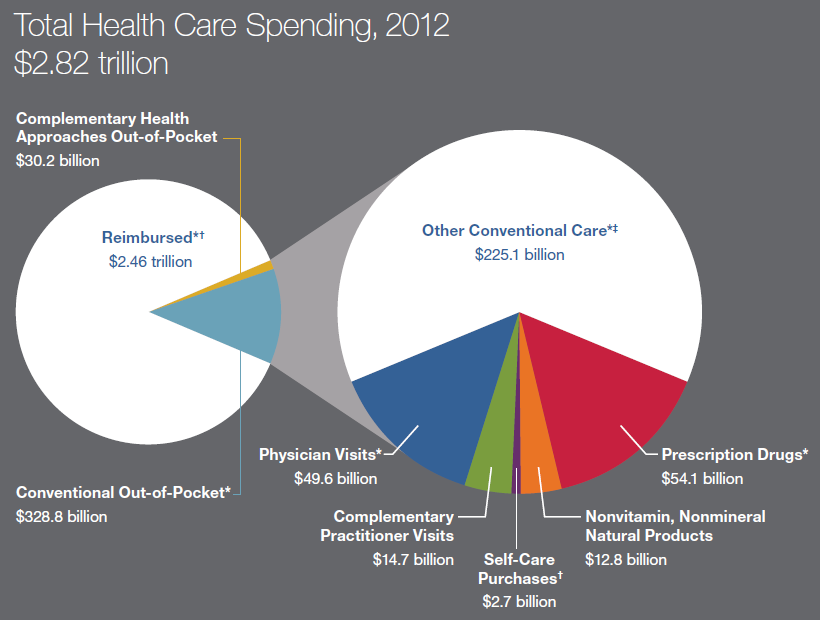The Use and Cost of Complementary Health Approaches in the United States
Use
The 2012 National Health Interview Survey, which was conducted by the National Center for Health Statistics, part of the Centers for Disease Control and Prevention, gathered information on 88,962 American adults and 17,321 children. The survey found that 33.2 percent of adults in the United States aged 18 years and over and 11.6 percent of children age 4 to 17 years used some form of complementary health approach in the previous 12 months. The percentages of adults and children using complementary approaches were similar to those in previous surveys.
Cost
Americans spent $30.2 billion out-of-pocket on complementary health approaches—$28.3 billion for adults and $1.9 billion for children—during the 12 months prior to the survey. This equates to 1.1 percent of total health care expenditures in the United States ($2.82 trillion) and to 9.2 percent of out-of-pocket health care spending ($328.8 billion). Americans spent $14.7 billion out-of-pocket on visits to complementary practitioners, which is almost 30 percent of what they spent out-of-pocket on services by conventional physicians ($49.6 billion). Americans spent $12.8 billion out-of-pocket on natural product supplements, which was about one-quarter of what they spent out-of-pocket on prescription drugs ($54.1 billion).

* National Health Expenditure Data for 2012. U.S. Department of Health and Human Services, Centers for Medicare and Medicaid Services Web site. Accessed at: www.cms.gov/Research-Statistics-Data-and-systems/Statistics-Trends-and-reports/NationalHealthExpendData/ on March 31, 2016.
† Self-care purchases includes, for example, homeopathic medicines and self-help materials such as books or CDs related to complementary health topics.
‡ Other conventional care includes dental care, nursing homes, home health care, nondrug medical products, hospital care, and other professional services.
Source: Nahin RL, Barnes PM, Stussman BJ. Expenditures on complementary health approaches: United States, 2012. National Health Statistics Reports. Hyattsville, MD: National Center for Health Statistics. 2016.